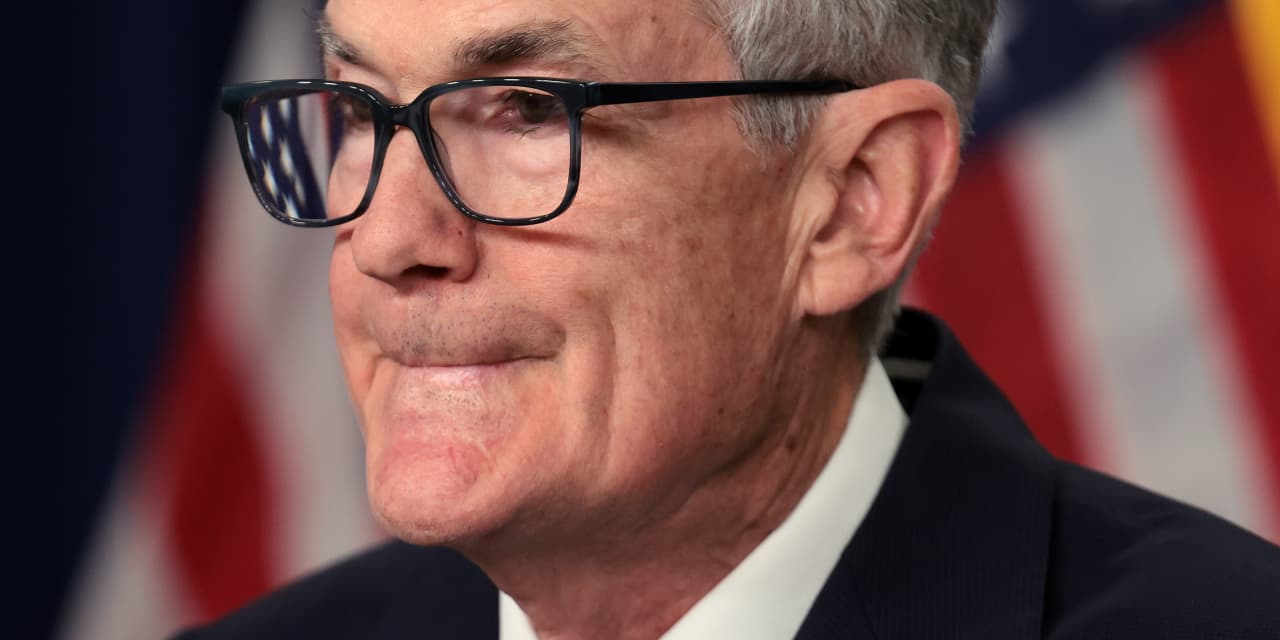Investors hyper-focused on expectations for rate cuts in 2024 can expect the Federal Reserve to buttress financial markets in another vital way, according to BofA Global’s rates team.
BofA Global’s rates team, led by Mark Cabana, now expects the Fed to start cutting rates from a 22-year high in March, but also to unveil plans to stop shrinking its roughly $7.7 trillion balance sheet at midyear.
The Fed in early 2020 restarted a crisis-era program allowing it to buy trillions of dollars in U.S. Treasurys and government-backed mortgage bonds to help contain fallout from the pandemic.
A criticism of the program has been that can encourage excessive risk-taking in markets by juicing liquidity and suppressing yields, and can lead to asset bubbles that could threaten financial stability.
“At the March FOMC meeting, when we think the Fed initiates its first 25bp rate reduction, we expect the Fed to announce the tapering of runoff for its holdings of Treasury securities,” Cabana’s team wrote in a Monday client note.
Members of the Fed Open Market Committee can set short-term interest rates but also calibrate the size of the Fed’s balance sheet to keep markets functioning smoothly, shrinking its portfolio to tighten financial conditions and expand it during times of stress.
Dallas Fed President Lorie Logan said during a Saturday speech in Dallas that “normalizing” the Fed’s balance sheet at a slower pace can help by “smoothing redistribution,” while also reducing the risk that it will stop “prematurely.”
The Fed in recent years has been an anchor investor in both the roughly $26 trillion Treasury market and the $12 trillion agency mortgage-backed securities market.
Importantly, Logan on Saturday said the Fed’s balance-sheet reduction should slow when overnight reverse repo balances fall to a low level.
See: Fed’s Logan backs first slowing, then gradually ending, balance-sheet runoff
Cabana’s team thinks a $200 billion to $250 billion “low level” of the Fed’s overnight reverse repo facility could be reached in March. Demand for the program was under $700 billion on Friday, down from a pandemic peak of about $2.5 trillion parked overnight at the Fed.
A shrinking overnight reverse repo facility points to excess liquidity being deployed into other assets. While stocks have had a tough start to 2024, the Dow Jones Industrial Average
DJIA
recently set a series of record closes and the S&P 500 index
SPX
ended Friday only about 2% below its record close, according to Dow Jones Market Data.
The benchmark 10-year Treasury yield
BX:TMUBMUSD10Y
also has been trading below 4% in the new year, after jumping to 5% in October, sparking havoc in financial markets.
The Fed began shrinking its balance sheet and raising interest rates in this cycle after inflation hit a peak of 9.1% in July of 2022. With inflation receding, but still above the Fed’s 2% target, investors will be focused on a new reading for December due on Thursday.
To shrink its balance sheet, the Fed has been letting up to $60 billion in Treasurys and up to $35 billion in agency mortgage-backed securities mature and “roll off” its balance sheet each month, though high mortgage rates have meant the MBS monthly caps haven’t been met.
Related: Homes are expensive right now, but these mortgage bonds look cheap
The BofA team sees the Fed limiting Treasury roll off, starting in March, and ending it in July, but keeping the MBS program unchanged.
The team also expects 100 basis points of Fed rate cuts this year, bringing the U.S. central bank’s short-term policy rate to 4%, with it falling to about 3% by early 2026.
“BofA’s outlook for monetary policy also includes an end to QT at midyear,” the Cabana team wrote.
The policy is known as “quantitative easing” when a central bank is buying bonds to expand its balance sheet and as “quantitative tightening” when its balance sheet is shrinking. It was first tapped in the wake of the 2007-2008 global financial crisis to quickly inject liquidity into markets.
Read the full article here












Leave a Reply